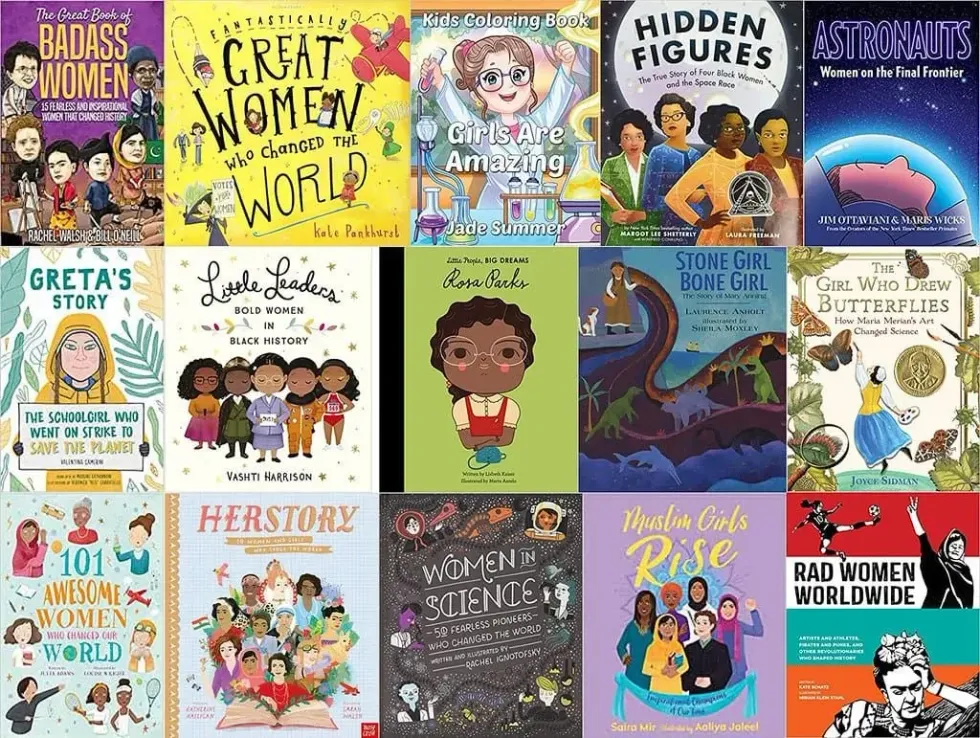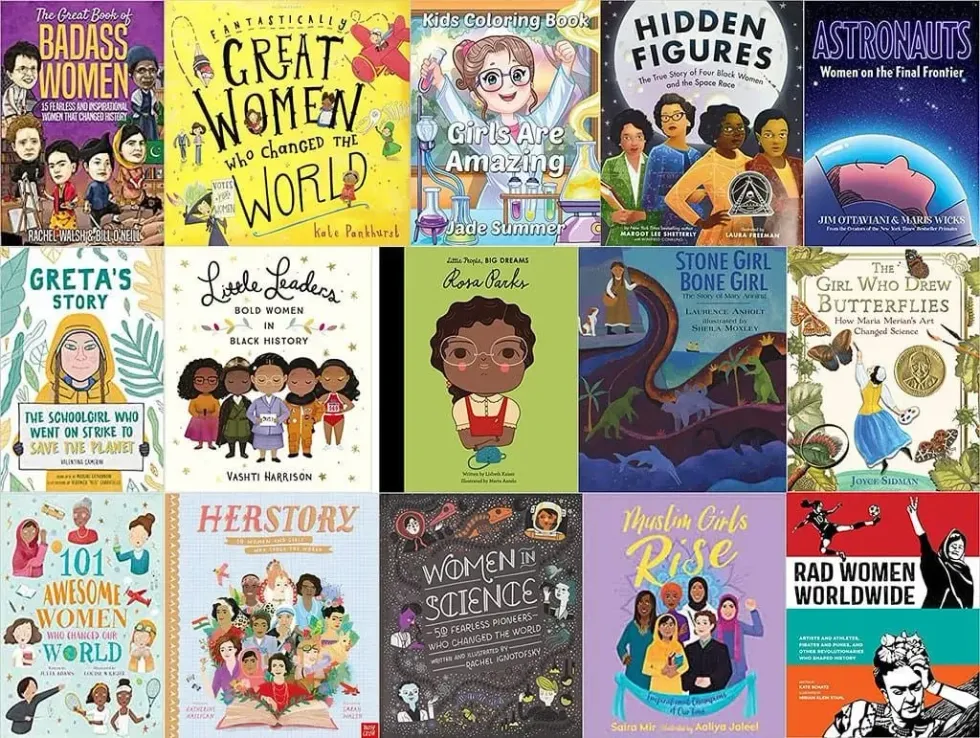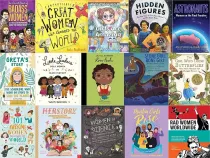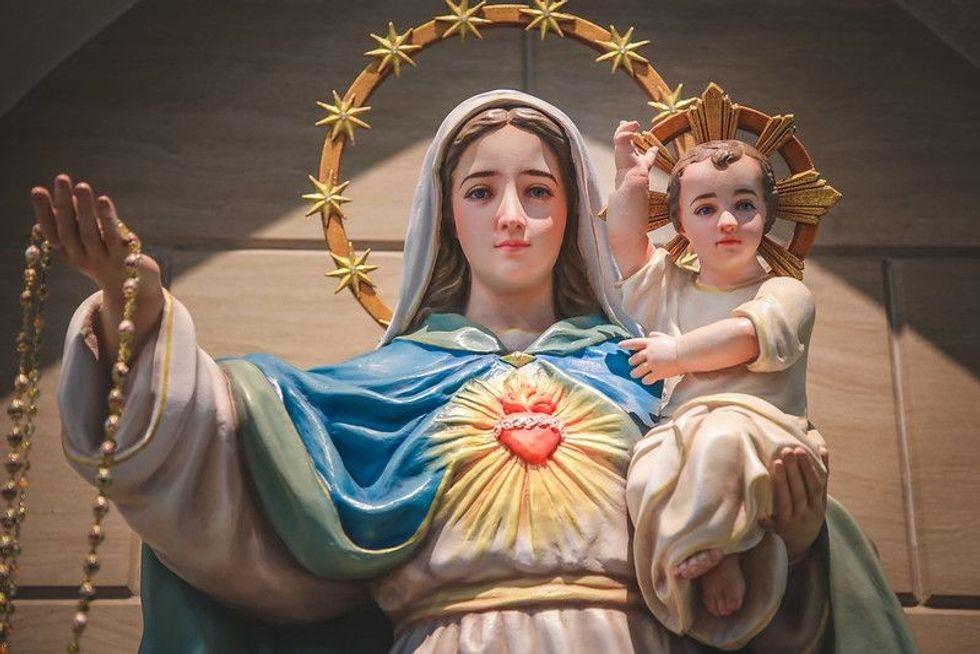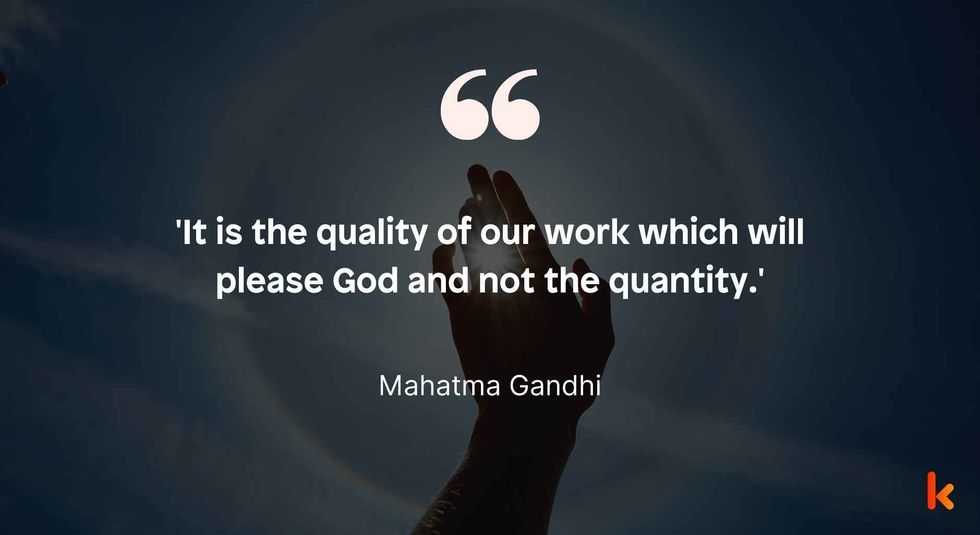As a female-founded business, Kidadl is a strong champion of women’s rights and equality. We believe that reading books which emphasise the achievements and potential of women should be part of every childhood, whatever their gender.
To mark International Women’s Day, we’ve listed out 36 of the most inspiring (non-fiction) books for kids, all of which offer strong female role models for young people and help redress the male-dominated narratives of history.
Early Years And Primary School (3-7)
Little Feminist Board Book Set, by Emily Kleinman and Lydia Ortiz: For the very youngest readers, this box set of board books presents colourful illustrations of female role models, under the themes of artists, pioneers, leaders and activists.
Fantastically Great Women Who Changed the World, by Kate Pankhurst: Kids will revel in this cartoon-style exploration of some of history’s greatest women, which topped the UK charts as bestselling children’s non-fiction book.
It’s an unbeatable introduction to some of the more famous names, such as Rosa Parks, Coco Chanel and Marie Curie (as well as the author’s own ancestor Emmeline Pankhurst), but you’ll also get a few lesser-known stories too.
The book has several sequels in the same style: Great Women Who Saved the Planet, Great Women Who Worked Wonders, and Great Women who Made History.
Girls Are Amazing, by Jade Summer: This life-affirming colouring book offers 26 inspirational images for young people to colour in. Each shows girls succeeding at a particular skill in order to “motivate, encourage and build confidence”. Girls Can Be Anything, by the same author, will get your kids colouring in pictures of women as firefighters, architects and CEOs.
Hidden Figures, by Margot Lee Shetterly and Laura Freeman: The African American women who helped calculate the flight paths of NASA’s early crewed space flights were celebrated in the critically acclaimed film Hidden Figures, but the story is also available as a picture book.
It can’t have been easy to weave a tale of racial prejudice and orbital mechanics into a book for younger children, but the authors have clearly pulled it off with a five-star Amazon ranking after hundreds of reviews. Counting on Katherine, by Helaine Becker, is another top-rated picture book on the same topic, focussing on NASA mathematician Katherine Johnson.
There’s even a LEGO version of the story.
Little Leaders: Bold Women in Black History, by Vashti Harrison: The author created this charming book with her younger self in mind: “I think about what kinds of dreams I might have had if I had known about all these women when I was growing up, if I’d known that so many people who looked like me had done such incredible things.” It features many well-known and lesser celebrated women, and the delightful illustrations ensure it’ll appeal even to younger children.
The theme is continued in Harrison’s follow-up, Little Leaders: Visionary Women Around the World, and a board book for younger readers.
Little People, Big Dreams Inspiring Artists and Writers(various authors and illustrators): Something of a publishing phenomenon, these books explore the ‘great lives’ of history with language and illustrations that’ll appeal to primary school children. Around half are women, including Rosa Parks, Emmeline Pankhurst, Frida Kahlo and, bringing us right up to date, Greta Thunberg.
Stone Girl, Bone Girl: The Story of Mary Anning, By Laurence Anholt and Sheila Moxley: This is the story of Mary Anning, one of the world’s pioneering fossil hunters who made some of her most remarkable discoveries while still a girl.
The combination of prehistoric life and the young protagonist make this the ideal (true) story for younger readers, helped by the simple language and striking illustrations.
Later Primary School (8-11)
Astronauts: Women on the Final Frontier, by Jim Ottaviani and Maris Wicks: A comic-book telling the stories of the first women astronauts, and those who trained for the final frontier but never made it.
The Girl Who Drew Butterflies, How Maria Merian’s Art Changed Science, By Joyce Sidman: Remarkably, it took until the 17th century for somebody to realise that caterpillars turn into butterflies. That somebody was Maria Merian, whose careful observation and drawings finally revealed one of nature’s greatest transformations. This richly illustrated book is a beautiful introduction to this little-known naturalist.
Greta’s Story: The Schoolgirl Who Went on Strike to Save the Planet, By Valentina Camerini: A children’s biography of environmental campaigner Greta Thunberg.
The book tells her remarkable story, but also that of the many other children and teenagers who continue in their efforts to slow climate change. Greta’s story has also been turned into the allegorical tale of Greta and the Giants by Zoe Tucker and Zoe Persico, for slightly younger children.
Older children and teens might also read Greta’s own words in her bestselling book No One Is Too Small To Make A Difference.
HerStory: 50 Women and Girls Who Shook The World, By Katherine Halligan and Sarah Walsh: It’s the pun that hides a very real truth, history is so often HIS-story. Our past is usually framed around the exploits of men, with the women as bit players.
HerStory seeks to redress this by re-examining history from the perspective of 50 great women and girls.
Muslim Girls Rise: Inspirational Champions Of Our Time, By Saira Mir: This gorgeous book brings the stories of 19 inspirational Muslim women to life. Rather than taking an historial slant, the book focuses on modern heroes -- all the subjects are drawn from the 21st century.
Rad American Women A-Z: Rebels, Trailblazers, and Visionaries Who Shaped Our History ... and Our Future!, By Kate Schatz: This truly is an A-Z, picking out alphabetically 26 American women who have made an impact. This is a great book for finding stories that aren’t so often told. It’s follow-on, Rad Women Worldwide, takes the concept worldwide.
101 Women Who Changed The World, by Louise Wright: Another collection of biographies, this one has a really neat fact-file style, which makes it ideal for dipping in and out. With profiles of 101 women, the book strays far from the usual important names, and your child is sure to find many new inspiring examples.
Women In Science: 50 Fearless Pioneers Who Changed The World, by Rachel Ignotofsky. A favourite in our household, this uniquely illustrated hardback is a stunning introduction to 50 female pioneers in science,technology, engineering and medicine.
It also includes spreads on the history of science, the scientific toolkit and statistics. Ignotofsky has applied the same winning formula for her other books Women in Art and Women in Sport.
Secondary School (12+)
Bad Girls Throughout History: 100 Remarkable Women Who Changed the World (Women in History Book, Book of Women Who Changed the World), by Ann Shen: Not so much ‘bad’ as in ‘corrupt’ (though there are pirates in these pages), but ‘bad’ as in ‘not afraid to break the rules and societal norms to make progress’, this book paints the lives of 100 notable women.
And paints is the right word, as Shen captures each subject in striking watercolour portraits, setting this book apart from the other biography collections in this list.
Note that the book contains occasional sexual references.
Becoming, By Michelle Obama: The inspirational story of a girl who, from humble beginnings, grew up to be the First Lady of the USA and much more besides. Her hugely best-selling autobiography has now been adapted for a younger audience.
The Great Book of Badass Women: 15 Fearless and Inspirational Women that Changed History, by Rachel Walsh: Another collection of biographies, but this time themed around women who are in some way ‘badass’.
The 15 subjects are drawn from across the world, and include The Mirabel Sisters of the Dominican Republic, Chinese pirate leader Ching Shih and modern champion of women’s rights Ruth Bader Ginsburg.
I Am Malala: How One Girl Stood Up for Education and Changed the World, By Malala Yousafzai and Patricia McCormick: Malala Yousafzai should need little introduction. At the age of 12, she was shot by the Taliban for standing up to their tyranny.
Remarkably, she survived, and went on to become a worldwide symbol for peaceful protest as well as the youngest ever Nobel Peace Prize winner.
This is her story, as told for a younger audience (age 11-17 recommended). The book has also been adapted for a 7+ audience.

